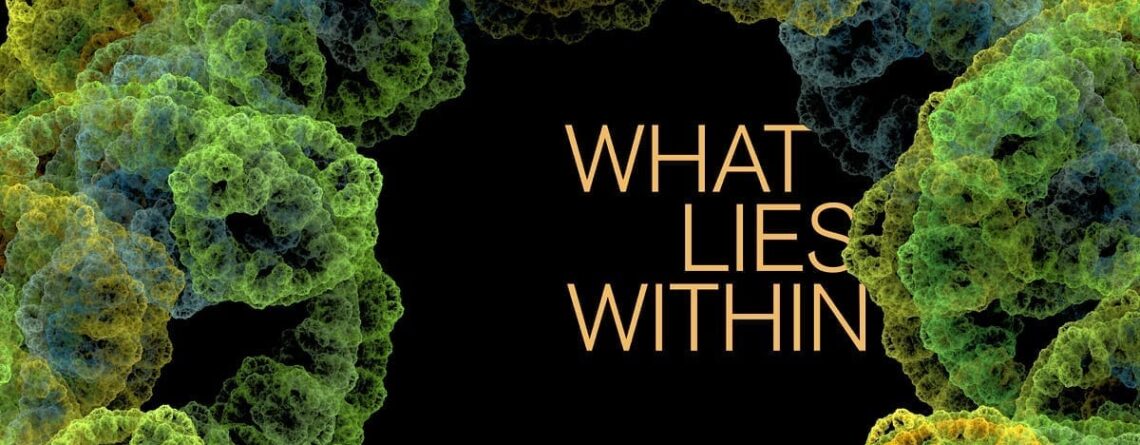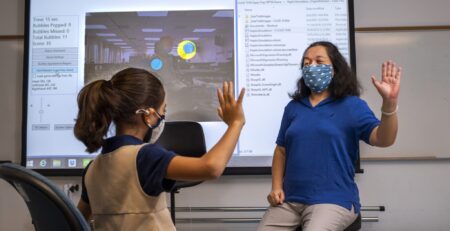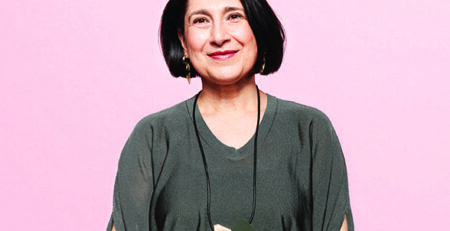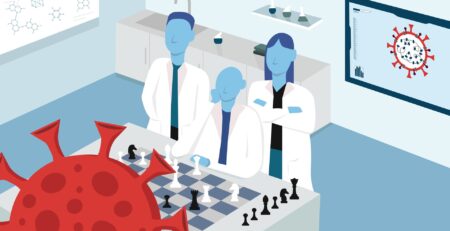written by Jennifer Rainey Marquez
written by Jennifer Rainey Marquez
You probably think of yourself as a singular being: Me, myself and I. But in truth, you are not so self-contained. Humans are superorganisms, home to an invisible ecosystem of bacteria, viruses, fungi and other microbes. Your body is so packed with tiny lifeforms they outnumber your own cells.
You probably think of yourself as a singular being: Me, myself and I. But in truth, you are not so self-contained. Humans are superorganisms, home to an invisible ecosystem of bacteria, viruses, fungi and other microbes. Your body is so packed with tiny lifeforms they outnumber your own cells.
These hangers-on, known altogether as the microbiota, can be found from the top of your head to the soles of your feet, but the biggest concentration — up to 1,000 species — reside in your gut. Most are benign or even beneficial. Bacteria are responsible for breaking down otherwise undigestible food into usable fuel and producing essential vitamins and nutrients.
Even beyond their basic functions, scientists have discovered these miniscule organisms have an outsized influence over your health. In conditions ranging from obesity to anxiety to autoimmune disorders, the microbiota seems to play a role. At Georgia State University, an interdisciplinary team of researchers is working to elucidate the mechanisms by which these bacteria communicate with the body and how changes to the microbiota can promote or protect against disease.
WHAT SHAPES THE MICROBIOTA?
Just as environmental ecosystems differ from place to place, these bacterial ecosystems differ from person to person. No two individuals have quite the same microbiota. Your gut flora grows and evolves in response to many factors, including genetics, the food you eat and the medications you take. Even stress can play a role, as Georgia State researchers have found.
In a study published last year, scientists examined how social stress affected the gut microbiota of Syrian hamsters, animals that rapidly establish hierarchies — in which one hamster becomes dominant and the other becomes subordinate — when paired together.
They found in both the “winners” and the “losers” that the microbiota became less diverse overall after being subjected to social stress. This would seem to be an equally negative effect, given that good health generally seems to depend on a rich mix of gut bacteria.
“Yet when you look at the composition of the microbiota, different bacteria were impacted in dominants versus subordinates,” says Kim Huhman, Distinguished University Professor of Neuroscience and lead author of the study. “In dominants, social stress actually increased the presence of certain microbes that are thought to have a positive impact on the body’s stress response.”
The researchers then analyzed whether any microbes present before the animals were paired could predict whether the hamster would become dominant or subordinate. The answer was yes. Huhman and her team are now studying whether manipulating gut microbiota can have an effect on the animals’ behavior when they are then subjected to social stress.
“If certain gut microbes can have positive or negative effects on people’s ability to deal with social stress, then we could potentially improve people’s resilience by changing their gut bacteria,” says Huhman. “And social stress is a huge exacerbator of mental health conditions like depression or post-traumatic stress disorder. We know that antidepressants and anti-anxiety drugs don’t always work very well for some individuals. What if we could manipulate your microbiota instead?”

COEXISTING — OR COMBATING?
We often think of bacteria as something to be eradicated, whether by disinfectants, antibiotics, or our own immune systems. So how is it that trillions of bacteria can live inside our bodies without kicking up a massive immune response?
In the gut, the key is mucus, which forms a barrier between the microbes and the cells that line your intestinal tract, also known as the intestinal epithelium. As long as bacteria stay on their side of the fence, so to speak, the immune system doesn’t bother with them. If those microbes break through the mucus and come into contact with the epithelium, though, it can mobilize the immune system into action, triggering an inflammatory response that has cascading effects throughout the body.
One factor that can disrupt that delicate balance is food additives, Georgia State researchers have discovered. Andrew Gewirtz, professor in the Institute for Biomedical Sciences, and Benoit Chassaing, assistant professor of neuroscience and a former post-doctoral researcher in Gewirtz’s lab, have found that synthetic emulsifiers — common additives used to improve the texture and extend the shelf-life of processed foods — make it easier for bacteria to penetrate the mucus barrier. In animal models, their research has linked emulsifier consumption to obesity, metabolic syndrome and inflammatory bowel diseases such as colitis, conditions all marked by chronic inflammation.
“We know that the microbiota is regulated and influenced by the body, by genetics and by outside factors like diet,” says Gewirtz. “Now we’re trying to better understand how.”
But studying the mechanisms by which a particular factor like emulsifiers affects the microbiota is challenging because of the complex relationship between the bacteria and its human host. To get around the problem, Gewirtz and Chassaing are taking the host out of the equation. In their labs, the microbiota is replicated in vials, each containing a colony of human gut bacteria cultured from fecal samples.
“In this model there’s no intestine, no immune system, no inflammation,” says Chassaing of their method. “We can analyze the makeup of bacteria and monitor how it changes in the presence of, for instance, food additives. Then we can transplant the same microbiota into mice to assess whether they experience inflammation or get sick.”
The scientists’ research has revealed that different colonies of gut flora respond in different ways to stressors like emulsifiers. They have identified some microbiota that are completely resistant to the negative effects of the food additives, and others that are particularly susceptible. The next step, they say, is to understand which bacteria are driving the susceptible phenotype and which are driving the resistant phenotype.
“If clinicians could use this approach to analyze the microbiota of a patient with, say, inflammatory bowel disease, it could help personalize their treatment strategy,” Chassaing says. “A doctor could say, ‘Cutting out emulsifiers won’t make any difference for your inflammation,’ to one patient, and tell another patient, ‘You have a susceptible microbiota and you should avoid these additives.’”
Learning more about how and why our immune system tolerates the microbiota may also help scientists better understand autoimmune diseases, chronic conditions in which the immune system goes into overdrive, attacking the body’s own tissues.
“How do certain microbes thwart the immune response? Some of it can be explained by physical barriers like mucus,” says Lezek Ignatowicz, professor in the Institute of Biomedical Sciences. “But it’s clear there are also active processes at work.”
Ignatowicz is interested in regulatory T-cells, a type of white blood cell that is known to keep the immune system in check, prevent autoimmune disease and maintain tolerance of antigens, proteins found on the surface of a pathogen that can trigger an immune response. He and his team are trying to pinpoint whether certain types of bacterial antigens may be preferentially recognized by these cells or even enhance their function.
“We’re not going to solve this overnight because of the complexity of the microbiome,” Ignatowicz says. “But if some species are shown to be ‘liked’ by regulatory T-cells, you could imagine these can be provided to patients suffering from autoimmune diseases.”



CALL OF THE WILD
A pilot project to turn lab mice into country mice could change the way scientists approach biomedical research.
Laboratory mice are often referred to as “clean,” meaning they are bred, raised and housed in super-sanitized environments. By keeping out microbes that mice would normally encounter in the wild, the argument goes, researchers can control for more variables in their experiments.
“The question is, are we making things so artificial that we’re not getting clear insight into the human condition?” asks Tim Denning, professor in the Institute for Biomedical Sciences.
With a restricted microbiota, the immune system of a clean mouse looks quite distinct from that of an average human. A wild mouse nosing around the garbage bins, on the other hand, has an immune system that — like yours — developed in the presence of diverse microbes. It’s no secret that most therapies that work in lab animals fail when they get to clinical trials, and genetic differences between mice and people aren’t always to blame.
“When you think about making vaccines or drugs, which animal model would you want to use in your experiments?” asks Denning. “I think most people would say we should include the animals that more closely mimic a human.”
Using wild mice, however, presents huge practical limitations. For one, wild mice aren’t always easy to come by. For another, clean mice are bred in a way that makes their genetics extremely well-defined: A lab mouse across the globe will have basically the same DNA as a lab mouse at Georgia State, which means scientists can share tools and replicate results.
“If you get a mouse from outside, many of the tools don’t work. We don’t know the genetics of that mouse,” says Denning. “So how do you maintain the power of the current model while doing something about its limitations?”
His solution: Take the clean mice and make them dirty. In 2018, Denning worked with Mike Hart, director of the university’s Division of Animal Resources, and John Kelley, the division’s assistant director, to build an outdoor facility where typical lab mice could burrow in the soil, forage for food and get exposed to the type of microorganisms that wild mice do.
“We take a group where we know their genetics, we know their history, we know everything about them,” he says. “Then we put half of the animals in a clean lab environment and half outside.”
Next, Denning and other scientists can begin examining changes in the microbiota, changes in the immune system and changes in response to disease. Researchers can also breed the mice in the outdoors and monitor the development of the immune system from birth.
The facility sits on a secure Georgia State property in Panthersville, about 10 miles from the downtown campus. Denning and his collaborators hope that it will be invaluable in understanding how environmental factors influence the development of the microbiota.
“Most scientists are reductionists; they want to control every single variable. But in the real world, there are tons of variables,” says Denning. “This approach lets us make observations and then start to work backwards to figure out the causes.”
Laboratory mice are often referred to as “clean,” meaning they are bred, raised and housed in super-sanitized environments. By keeping out microbes that mice would normally encounter in the wild, the argument goes, researchers can control for more variables in their experiments.
“The question is, are we making things so artificial that we’re not getting clear insight into the human condition?” asks Tim Denning, professor in the Institute for Biomedical Sciences.
With a restricted microbiota, the immune system of a clean mouse looks quite distinct from that of an average human. A wild mouse nosing around the garbage bins, on the other hand, has an immune system that — like yours — developed in the presence of diverse microbes. It’s no secret that most therapies that work in lab animals fail when they get to clinical trials, and genetic differences between mice and people aren’t always to blame.
“When you think about making vaccines or drugs, which animal model would you want to use in your experiments?” asks Denning. “I think most people would say we should include the animals that more closely mimic a human.”
Using wild mice, however, presents huge practical limitations. For one, wild mice aren’t always easy to come by. For another, clean mice are bred in a way that makes their genetics extremely well-defined: A lab mouse across the globe will have basically the same DNA as a lab mouse at Georgia State, which means scientists can share tools and replicate results.
“If you get a mouse from outside, many of the tools don’t work. We don’t know the genetics of that mouse,” says Denning. “So how do you maintain the power of the current model while doing something about its limitations?”
His solution: Take the clean mice and make them dirty. In 2018, Denning worked with Mike Hart, director of the university’s Division of Animal Resources, and John Kelley, the division’s assistant director, to build an outdoor facility where typical lab mice could burrow in the soil, forage for food and get exposed to the type of microorganisms that wild mice do.
“We take a group where we know their genetics, we know their history, we know everything about them,” he says. “Then we put half of the animals in a clean lab environment and half outside.”
Next, Denning and other scientists can begin examining changes in the microbiota, changes in the immune system and changes in response to disease. Researchers can also breed the mice in the outdoors and monitor the development of the immune system from birth.
The facility sits on a secure Georgia State property in Panthersville, about 10 miles from the downtown campus. Denning and his collaborators hope that it will be invaluable in understanding how environmental factors influence the development of the microbiota.
“Most scientists are reductionists; they want to control every single variable. But in the real world, there are tons of variables,” says Denning. “This approach lets us make observations and then start to work backwards to figure out the causes.”

![]() The mice are housed in containers made from retrofitted vegetable shipping crates, made of thick plastic and then lined with steel mesh. “There’s no way a mouse can chew through,” says Denning.
The mice are housed in containers made from retrofitted vegetable shipping crates, made of thick plastic and then lined with steel mesh. “There’s no way a mouse can chew through,” says Denning.
![]() A wireless surveillance system allows investigators, veterinarians and animal care technicians to monitor the mice, which are nocturnal. “You just open up the app to see the mice in real time using night vision,” says Denning.
A wireless surveillance system allows investigators, veterinarians and animal care technicians to monitor the mice, which are nocturnal. “You just open up the app to see the mice in real time using night vision,” says Denning.
![]() Mice like to burrow, so each container is buried nearly four feet underground and fitted with a top which extends another four feet above ground. Inside are shelters, nesting material, food, water and natural vegetation.
Mice like to burrow, so each container is buried nearly four feet underground and fitted with a top which extends another four feet above ground. Inside are shelters, nesting material, food, water and natural vegetation.
![]() Regular soil samples will show which bacteria, fungi or viruses the mice have encountered. “We think the dirt, where they’re living, is going to be the biggest change agent,” says Denning.
Regular soil samples will show which bacteria, fungi or viruses the mice have encountered. “We think the dirt, where they’re living, is going to be the biggest change agent,” says Denning.
THE GUT-BRAIN CONNECTION
Not so long ago, many scientists believed the microbiota’s sphere of influence couldn’t possibly extend to the brain, given that the blood-brain barrier is meant to block bacteria and other microbes from reaching the organ. But as experts have gained a deeper understanding of the gut, it’s clear that your microbiota and your brain are connected via an information superhighway of neurons, chemicals and hormones that can “listen” for signals from those trillions of microbes.
Recent studies have shown that the microbiota is involved in determining your mental state and the development of diseases ranging from Alzheimer’s to depression to autism. They may even play a role in neurodevelopment, according to Nancy Forger, professor and director of the Neuroscience Institute at Georgia State.
All vertebrates, she says, build a brain by overproducing neurons and then killing off about half of them at birth.
“We’ve known about this phenomenon for decades,” says Forger. “But nobody knows what triggers it, what ends it or why there are huge differences in the number of cells that die in different regions of the brain.”
She and her team have hypothesized that exposure to microbes, which first occurs as babies enter the birth canal, could be responsible. Last year, they published the results of an experiment in which mice were delivered into either a sterile environment or normal, non-sterile conditions. The study determined that a germ-free environment altered patterns of cell death across the brain, producing a higher rate of death in several areas.
“That got us thinking: Perhaps we have evolved to be microbe-expectant,” says Forger.
Her theory is that the vagus nerve, which extends to the gut and communicates directly with the brain, may be expecting microbes to appear immediately after birth. If they aren’t present, it could throw established patterns out of whack.
In a second study, the researchers also found that cell death in the brain was altered depending on whether mice were delivered vaginally or by Cesarean section. C-sections, which account for about 30 percent of U.S. births, can limit the development of an infant’s microbiota in two ways. Surgical delivery means babies don’t get exposed to a multitude of microbes as they pass through the birth canal. And mothers are routinely given antibiotics before the procedure, altering their own microbiota, which in turn influences that of the newborn.
“There’s evidence that suggests Cesarean births may affect human neurodevelopment, but of course you can’t do a randomized controlled experiment in which you assign mothers to different birth modes,” says Forger. “These animal studies are helping us determine what’s causing the effect.”
Another team of researchers is examining how changes to the microbiota can inform the way we think and behave. Neuroscience professor Geert de Vries is working with Gewirtz and Chassaing to build on the work they have done on emulsifiers, by looking at how the food additives affect behavior in mice. In a recent study, they found that consuming emulsifiers not only affected the gut microbiota of male and female mice (albeit in different ways) — it also affected their behavior. Male mice exhibited more anxiety-like behavior while female mice became less social.
The key is inflammation, says de Vries.
“We know that gut inflammation triggers local immune cells to produce signaling molecules that can affect tissues in other places, including the brain,” he says. “And we know that people that have a so-called leaky gut have higher preponderance of psychiatric symptoms and anxiety. If we could reduce inflammation related to the interaction between bacteria and the epithelium, we could provide a new way of treating these disorders.”

MICROBES AS MEDICINE
Every year, almost half a million people in the U.S. become infected with Clostridium difficile, or C. diff, bacteria that can wreak havoc inside the gut, causing severe diarrhea, vomiting and dehydration. The first-line treatment for C. diff is antibiotics, yet the bacteria are resistant to many of the drugs. If the infection comes back again and again, patients can die.
For those desperate sufferers, experts have discovered an unusual treatment can be effective in combatting C. diff: a fecal transplant. The procedure delivers a slew of helpful bacteria into the patient’s colon to crowd out the pathogens and “reset” the gut microbiota. And there are many scientists, including Gewirtz, who believe the microbiota could be altered in the same way to fight chronic disease.
“There’s currently interest in using fecal transplants for inflammatory bowel disease, metabolic syndrome and Type 2 diabetes,” all conditions that have been linked to an imbalance of the gut microbiota, he says.
The next step in this work is figuring out how to replicate the benefits of a fecal transplant with precise cocktails of bacteria.
“As of now, the human microbiome can only be manipulated broadly,” he says, “by wiping out whole colonies of bacteria through antibiotics or by introducing complex colonies of bacteria through fecal transplants.”
These transplants, while effective at fighting infection, have occasionally resulted in unintended effects. Some transplant recipients have gone on to develop obesity or metabolic syndrome, conditions that may be linked to harmful bacterial species in the donor’s gut.
“The consensus is that a fecal transplant — which is a very imprecise technique — is a temporary approach,” says Gewirtz. “The hope for the future would be to eliminate or introduce specific bacteria to prevent or reverse specific conditions.”
Scientists also have to determine the best way to get new bacteria to take up permanent residence in a recipient’s body.
“Clinical trials for fecal transplants to treat prediabetes or insulin resistance show very promising initial results,” says Gewirtz, “but after a few months, the effects fade and the microbiota returns to its initial state. We’re looking at ways to lastingly manipulate the microbiota.”
One way to do that is by changing the way we eat. A high-fiber diet, for example, improves the diversity and health of the microbiota, Gewirtz has found. That’s because fiber doesn’t just feed you, it also feeds the good bacteria in your gut, helping them flourish.
“The potential of dietary ingredients like fiber and emulsifiers to impact the microbiota — in both positive and negative ways — is exciting to me, because it’s very easy to manipulate,” says Gewirtz. “It’s not easy for a person to change their genetic risk factors. Whereas changing your diet is very much achievable.”












Leave a Reply